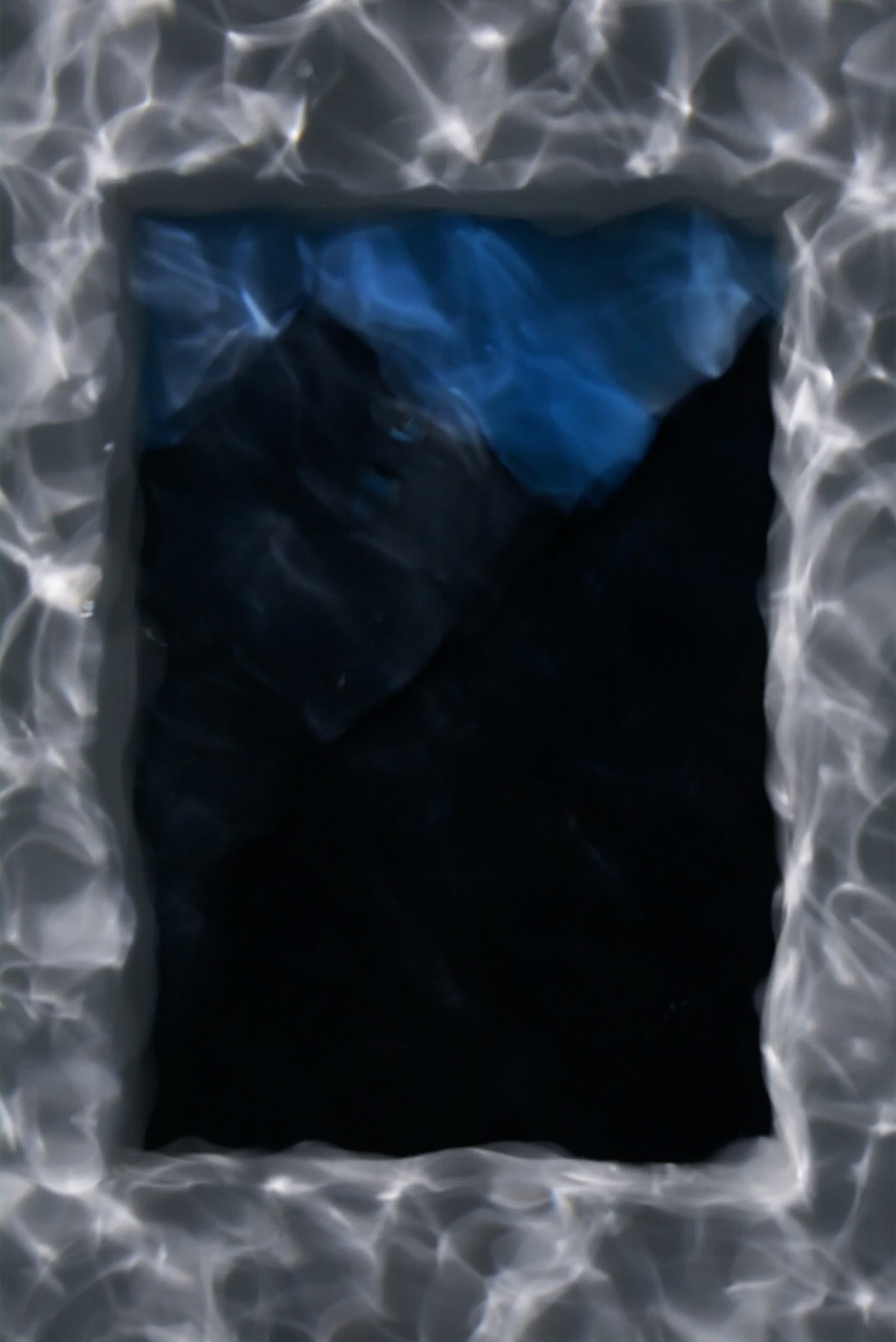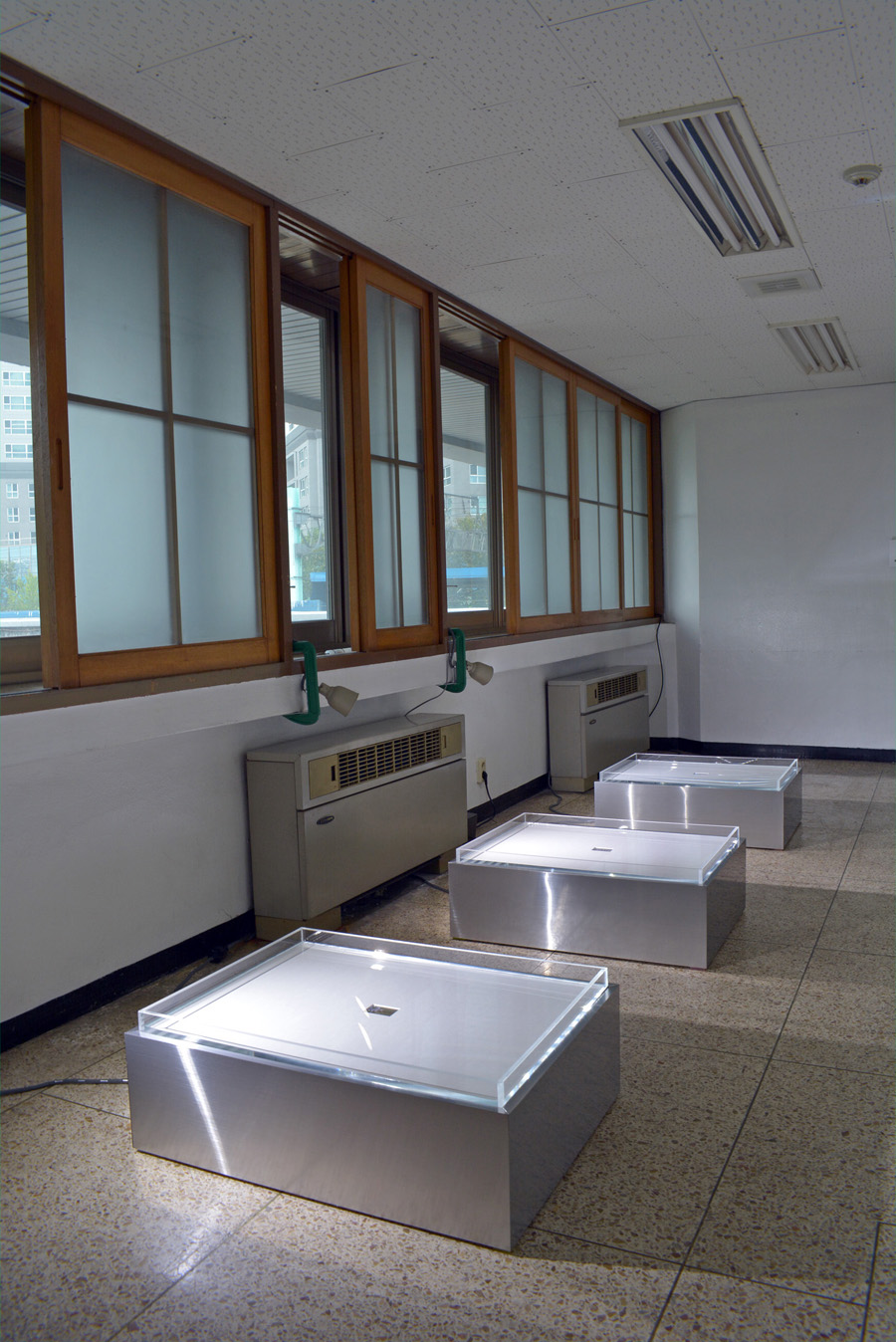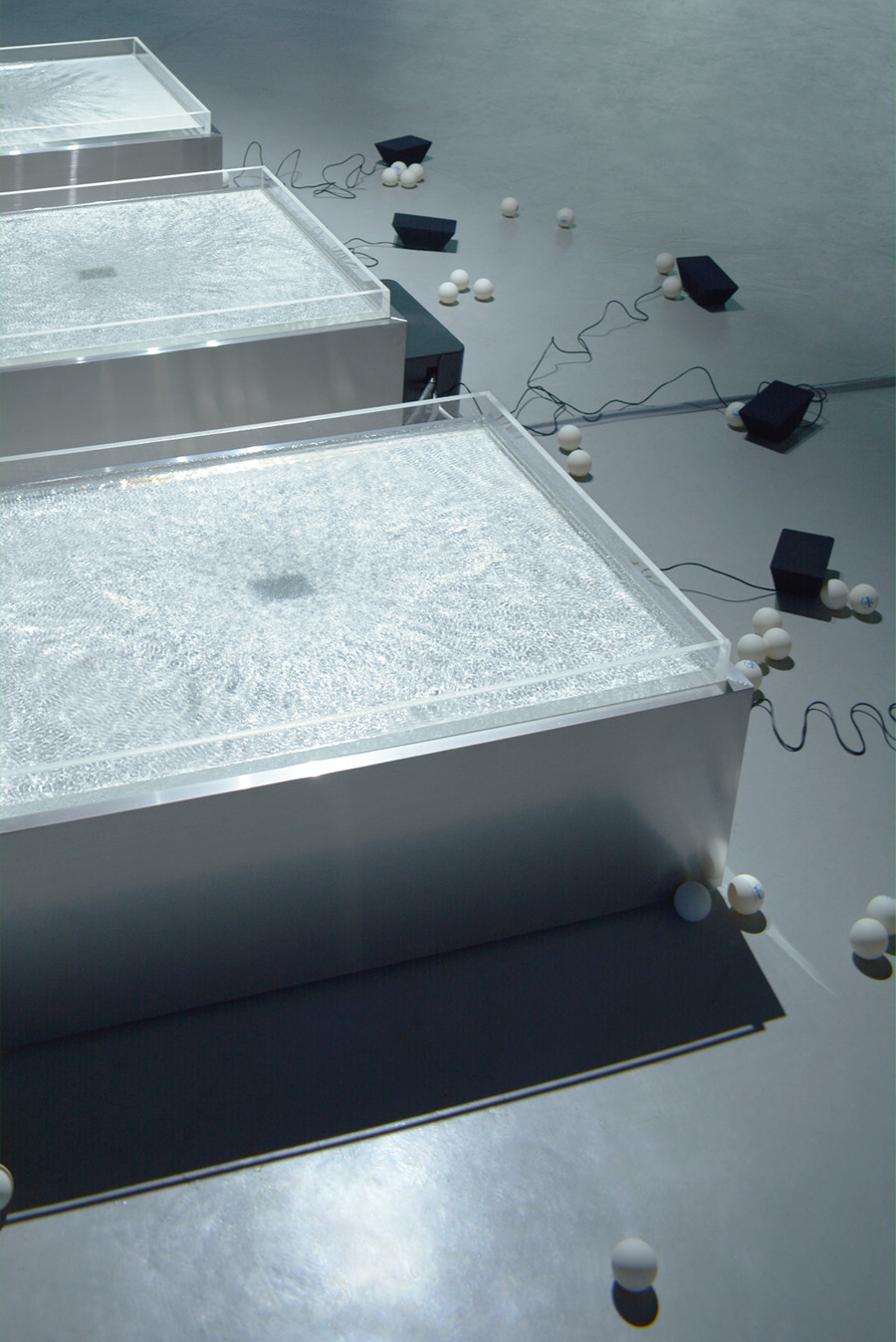
01 Clear Resolution - Installation Detail
CLEAR RESOLUTION
SITE-SPECIFIC MULTIMEDIA INSTALLATION
3 WATER TANKS WITH SUPPORTING FRAMES(64*84*29CM EACH),
3 COLOR PHOTOGRAPHS(4.5*6.5CM EACH), 3 PICTURE MATS, SOUND, 3 SUBWOOFERS,
3 SPEAKERS, 3 SPOT LIGHTS, INSTALLATION DIMENSIONS VARY
2019
3 COLOR PHOTOGRAPHS(4.5*6.5CM EACH), 3 PICTURE MATS, SOUND, 3 SUBWOOFERS,
3 SPEAKERS, 3 SPOT LIGHTS, INSTALLATION DIMENSIONS VARY
*
A Ping Pong Ball: On a Site-Specific Work that Has Left Its Place.
What can replace the site-specificity of a work after it has left its original place? My experience during the installation provided me one possible way - representing the site through an element embodying one's memory of the place.
As I opened the lid of a radiator that had been left untouched for an unknown amount of time to install the speaker, I discovered an old dusty ping pong ball resting at the bottom. I found it strange but decided not to remove it, leaving it undisturbed. Instead, I took a photo of the ball and posted it on social media along with an explanation of the discovery. A fellow artist who saw the photo, then told me an astonishing story. It turned out that the adjacent room from where my work was being installed had previously served as a resting area for police officers who once occupied the building. The officers played ping pong in that room, and I could imagine that the ball I found had bounced and rolled out of that space at that time. That room, in fact, was a site where horrific torture occurred against people who were fighting for democracy in the 1980s. Upon learning that someone would casually play ping pong in such a place, an inexplicable emotion washed over me, and I felt as if the sound of hundreds of bouncing balls echoed in my ears.

02 Clear Resolution - Installation View

03 Clear Resolution (With Ping Pong Balls Added) - Installation View
04 Clear Resolution - Installation View

03 Clear Resolution (With Ping Pong Balls Added) - Installation View
©EUNKYO KANG